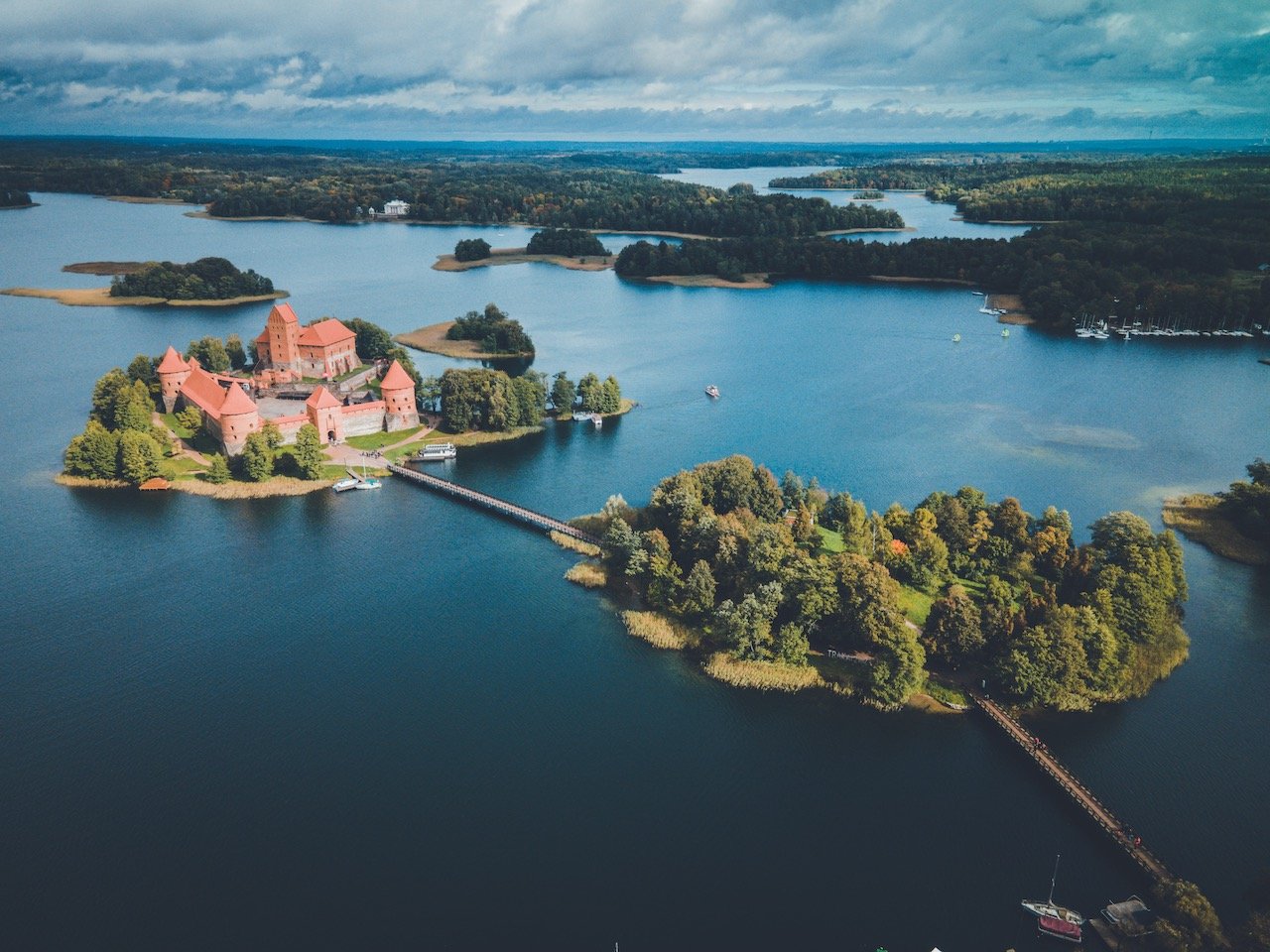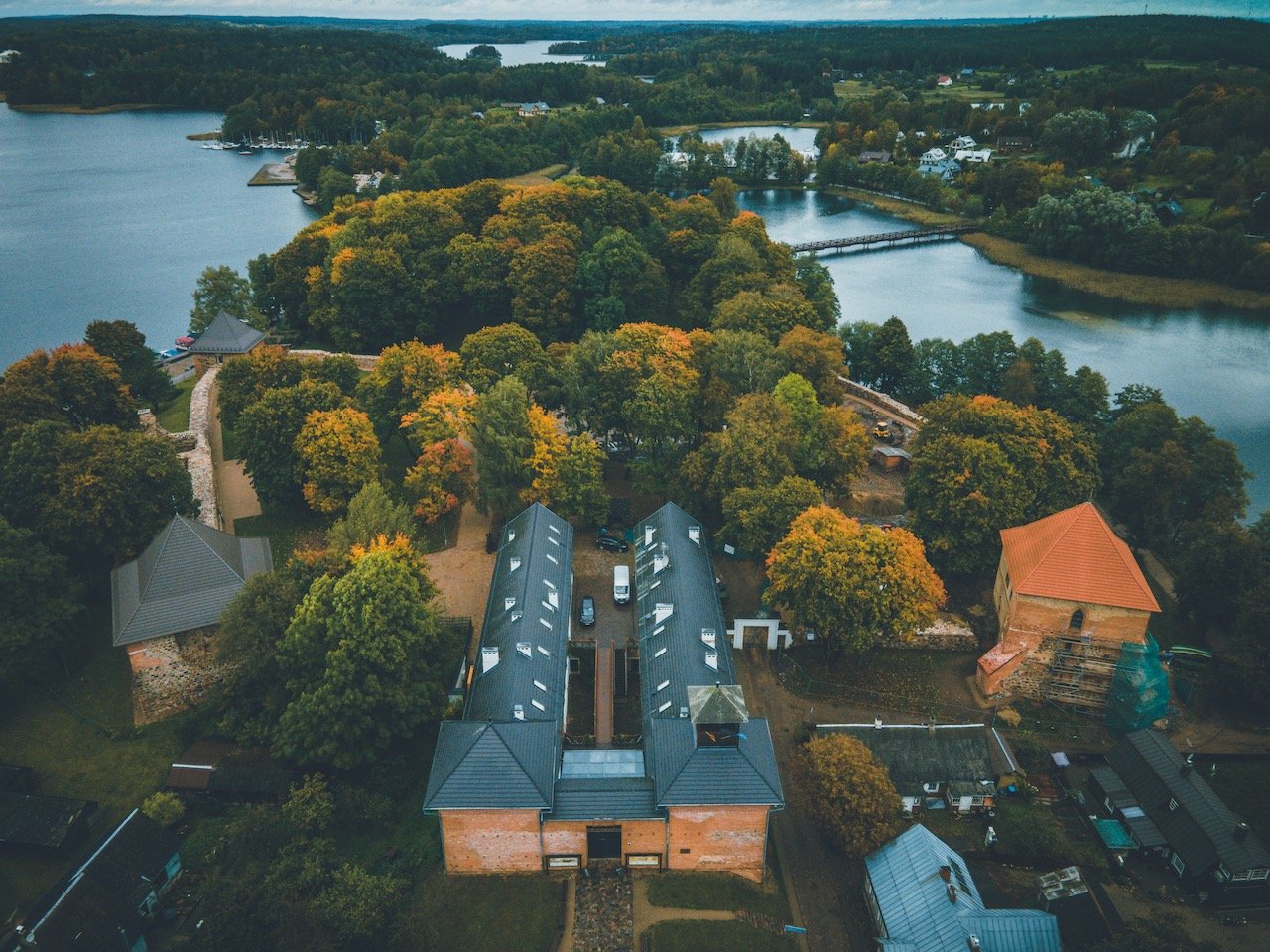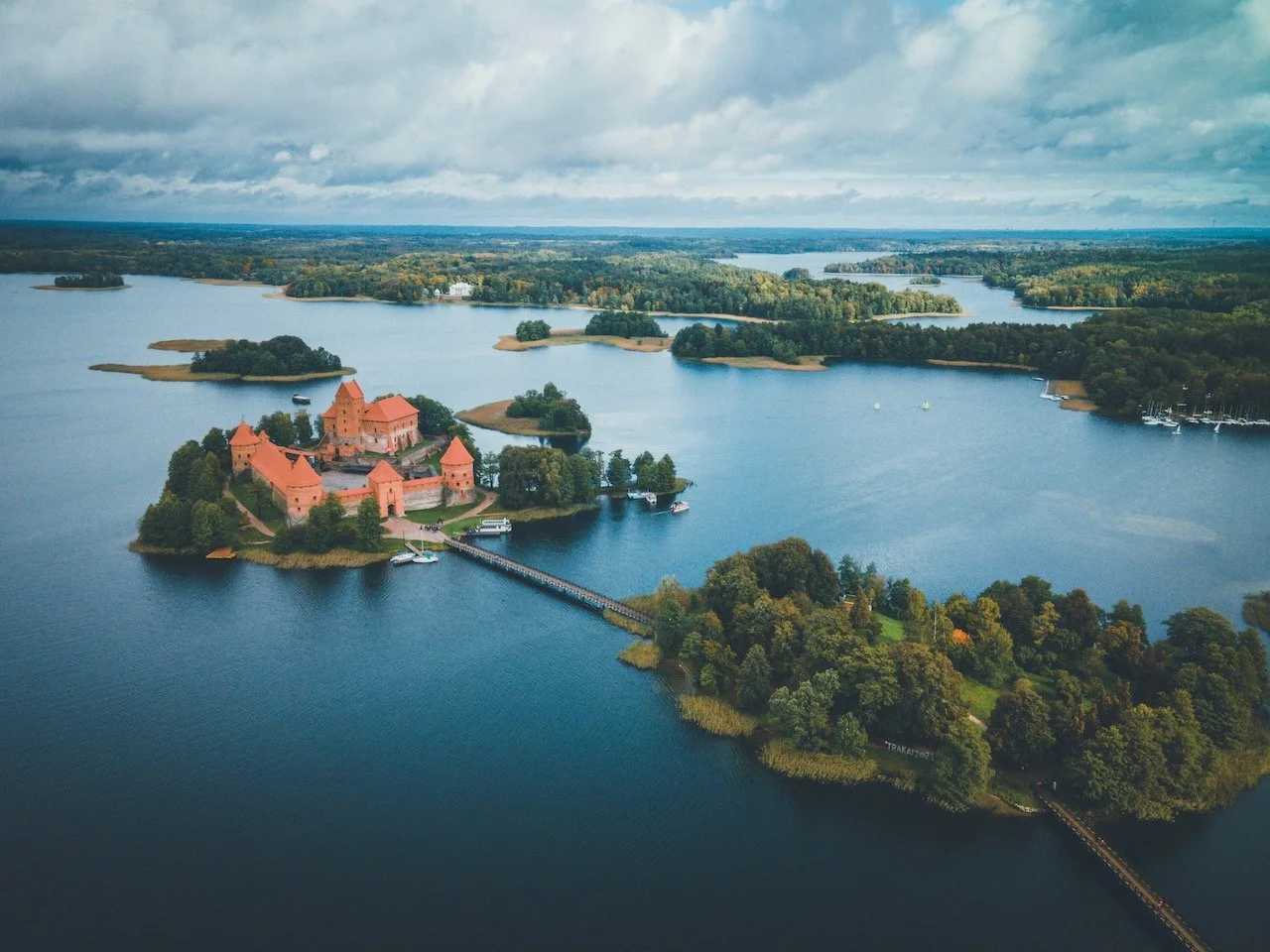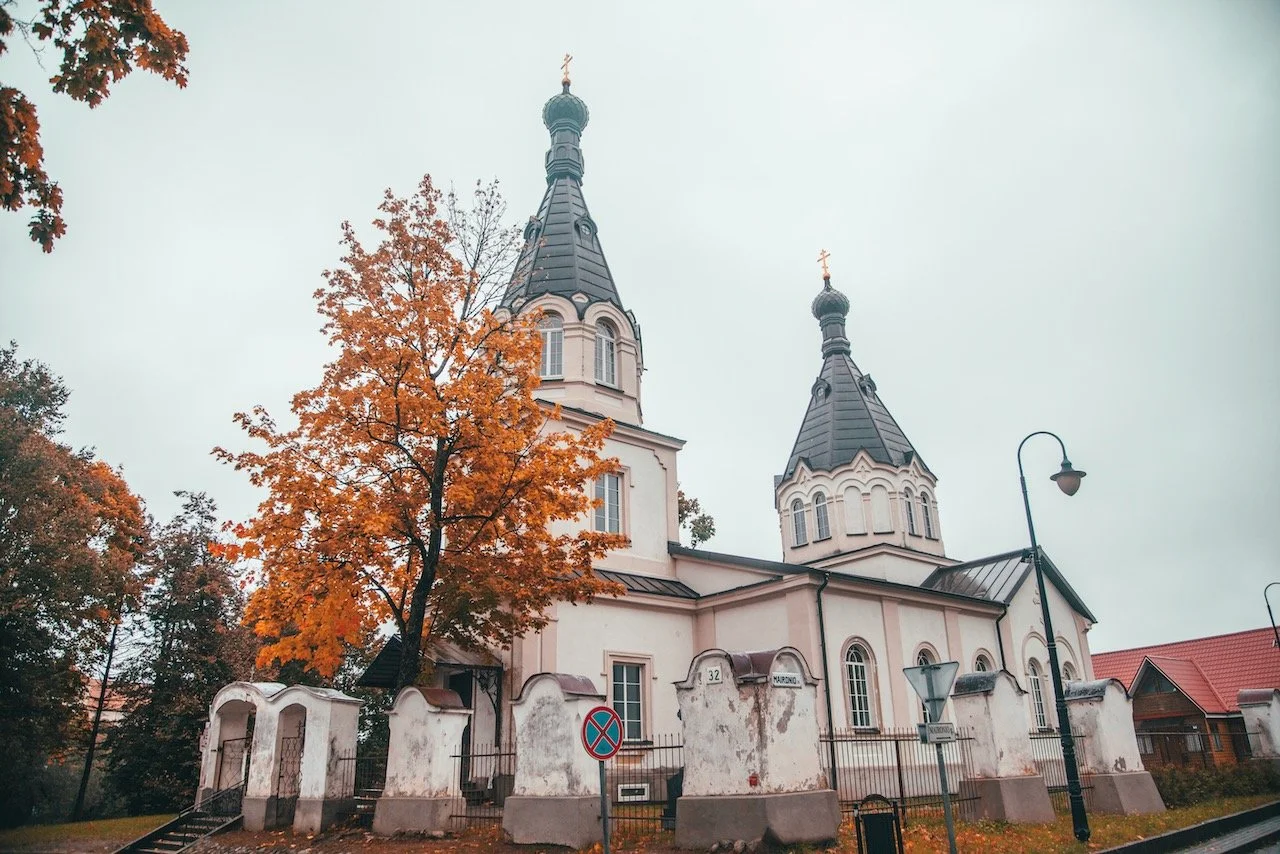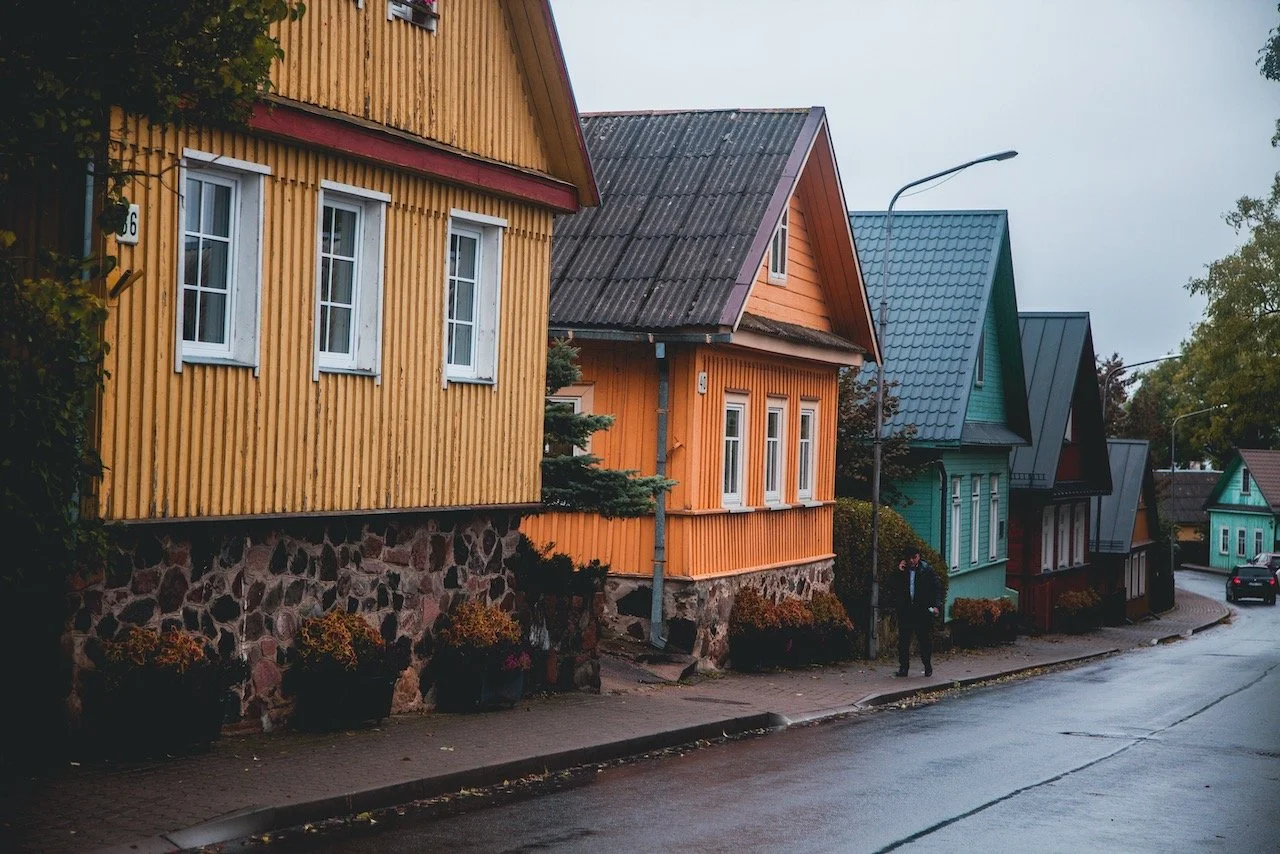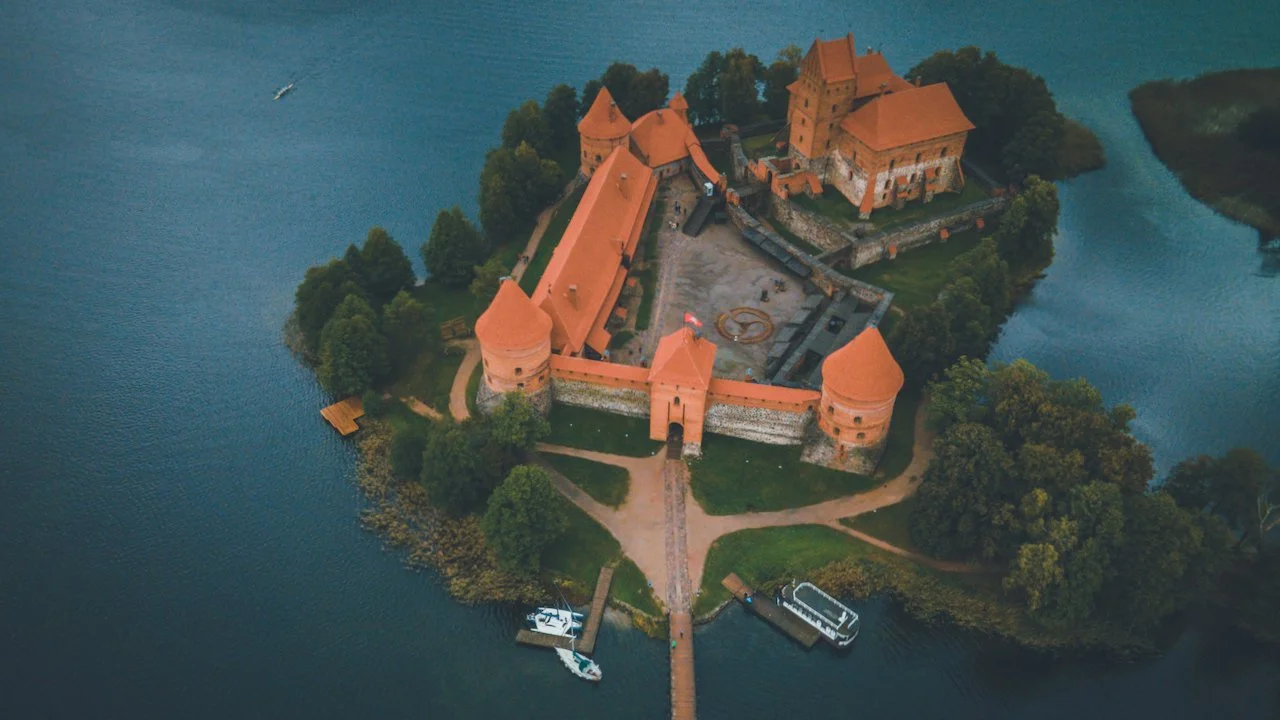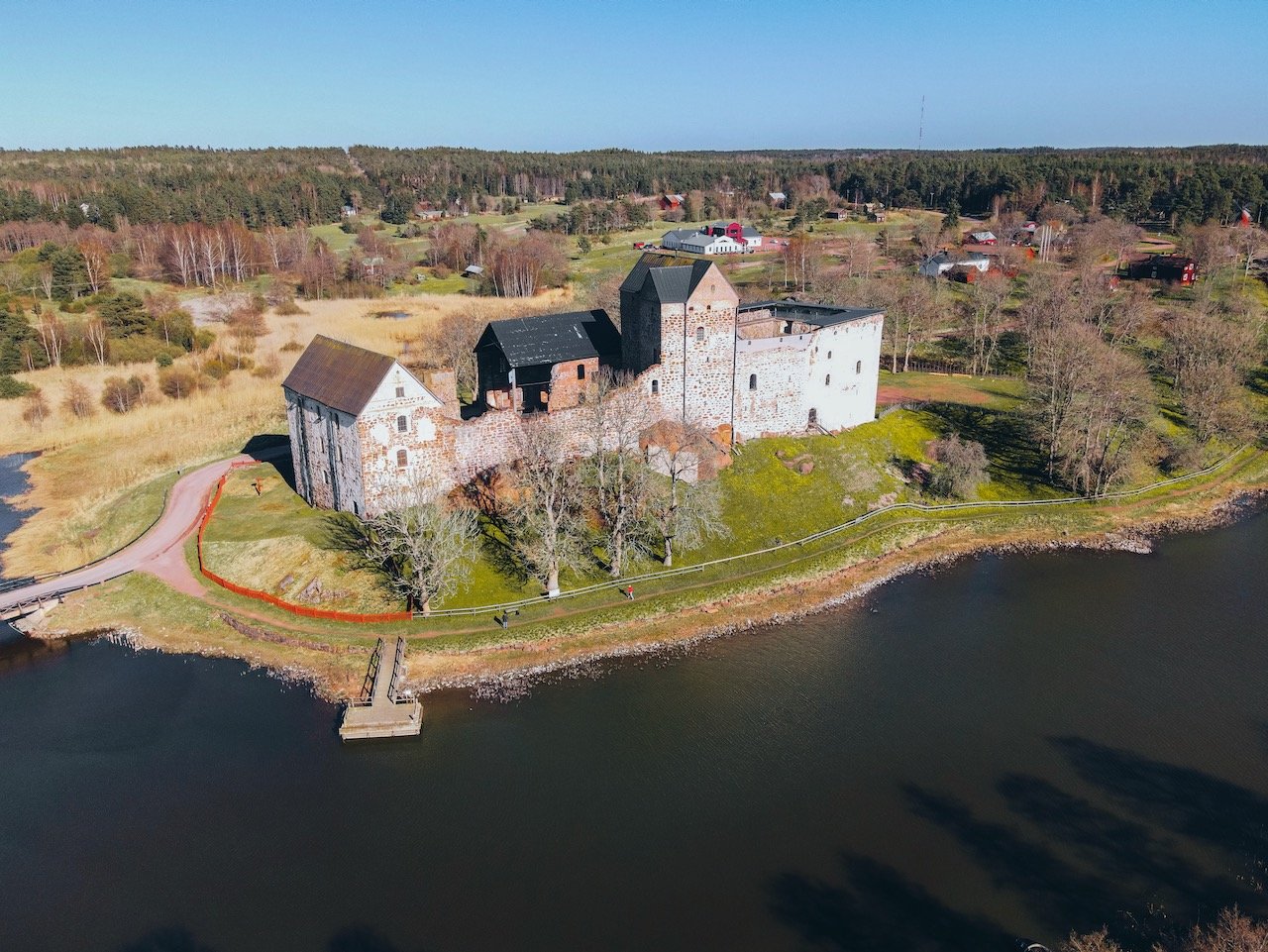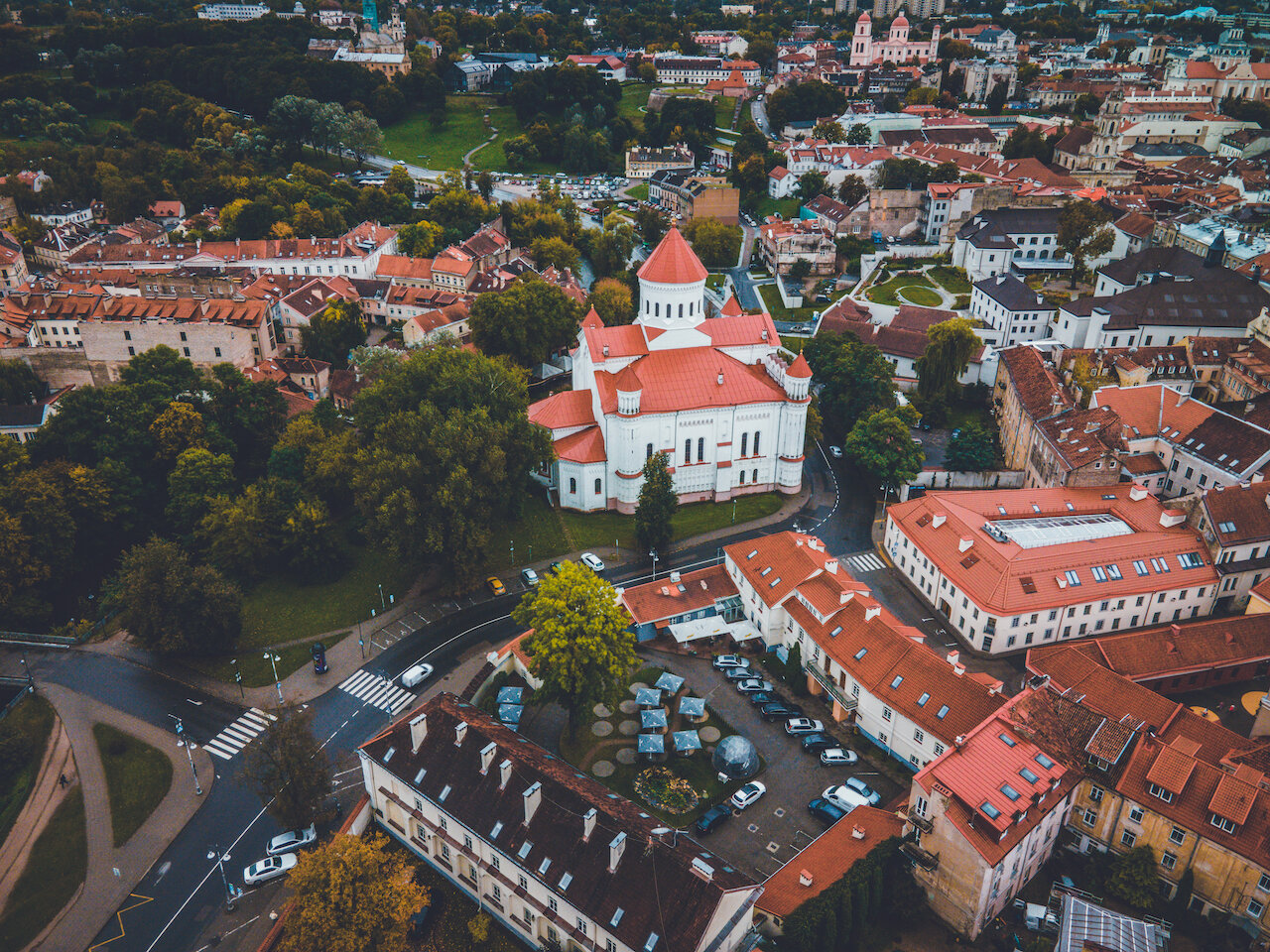A day trip to Trakai to see the gorgeous Trakai Island Castle in Lithuania
(Some links in this post are affiliate links. If you click through and take action, I'll be compensated.) If you are also interested in any PRINTS from any of my posts, be sure to check out my store where you can buy prints as posters, in metal/wooden frames or on canvas.
The small town of Trakai lies just an hour west of the Lithuanian capital of Vilnius. It can be seen rather easily with a day tour by bus. My first exposure to the city of Trakai was mainly through its castle, Trakai Island castle, to be exact. I saw quite a few photos of this gorgeous orange castle, situated on its own island. And since I had yet to see Vilnius as well, I combined my journey in Trakai in the same trip. (Check out my blog post on what to do and see in Vilnius).
Trakai is home to about 5,000 residents, most of which are of Karaim, Tatar, Lithuanian, Russian, Jewish, and Polish descent. First mention of the town appeared in 1337 and it was called Tracken (a german word) which derives itself from the Lithuanian word Trakai, meaning ‘glade’, which is a forest clearing.
Trakai contains 200 lakes and 21 islands, the most notable being Lake Gavle. Therefore, Trakai is a town that is known to be built on water. This was very noticeable after getting off of the bus and walking towards the castle. There is much coastline and many bridges along the way making this a great place to see during the summertime as I am sure there is a flurry of activity in the outdoors. My time there was rainy and the middle of fall unfortunately, but luckily the town was still quite gorgeous with the changing leaves.
How to Get to Trakai
Fly — The nearest major airport to Trakai is Vilnius Airport (VNO), about 30 km away. You can also fly into Kaunas Airport (KUN), around 70 km from Trakai.
From the airport, here are your options to reach Trakai:
Bus — From Vilnius Airport or city center, take bus 88 or 3G to Vilnius Bus Station. Then transfer to bus ~T761 (sometimes labeled as “Vilnius-Trakai”) for a direct ride to Trakai.
Duration from Vilnius Bus Station to Trakai — ~40 minutes
Cost — Around 2–3 Euros
Frequency — Every 30–60 minutes
Tickets — Buy at the bus station or onboard
Taxi — Taxis are available at Vilnius Airport and in the city.
Duration — About 30–40 minutes to Trakai
Cost — Approximately 25–35 Euros depending on time and traffic
Car Rental — Renting a car at Vilnius Airport is a convenient option if you want to explore beyond Trakai.

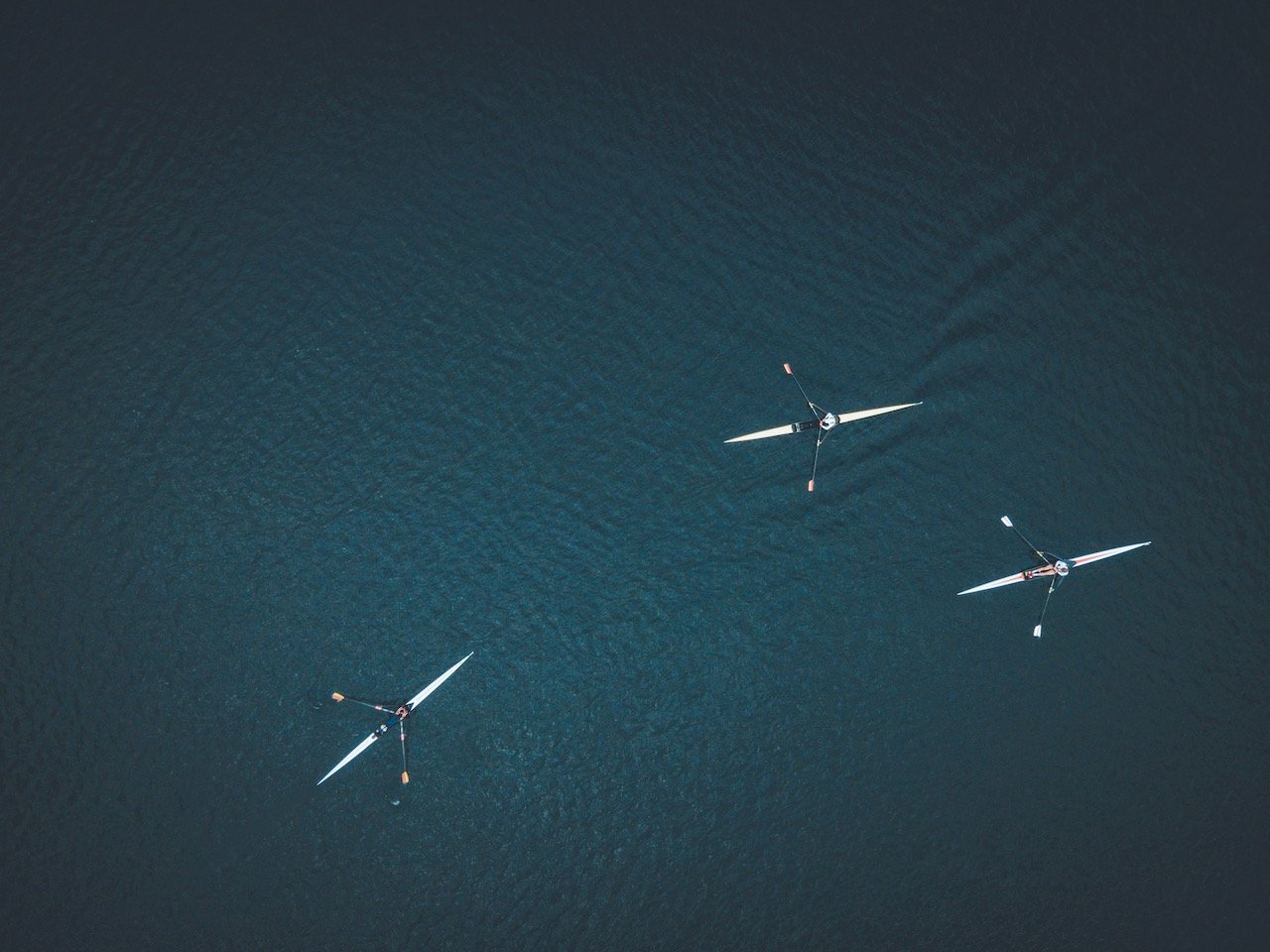
How to get to Trakai (by train)
Look up train times at this link. There are 11 train departures a day.
Catch you train at the Vilnius Railway Station (Geležinkelio St. 16).
Get off at the Trakai Train station, situated is 3 kilometers away from the Trakai Island Castle.
Check out my drone video of Trakai Island Castle below!
History of Trakai Castle
Construction of Trakai Island Castle was initiated in the 14th century by Kestutis, the Duke of Trakai at that time. Teutonic Knights attacked the castle in 1377 after Kestutis’s assassination. His son Vytautas the Great and aspiring ruler (and nephew) Jogaila at that time were vying to become the Grand Duke of Lithuania (of which the latter became) and the castle played a role in this struggle. After peace was made, major works were performed and complete in 1409 (and Vytautas the Great was buried in the castle after his death in 1430).
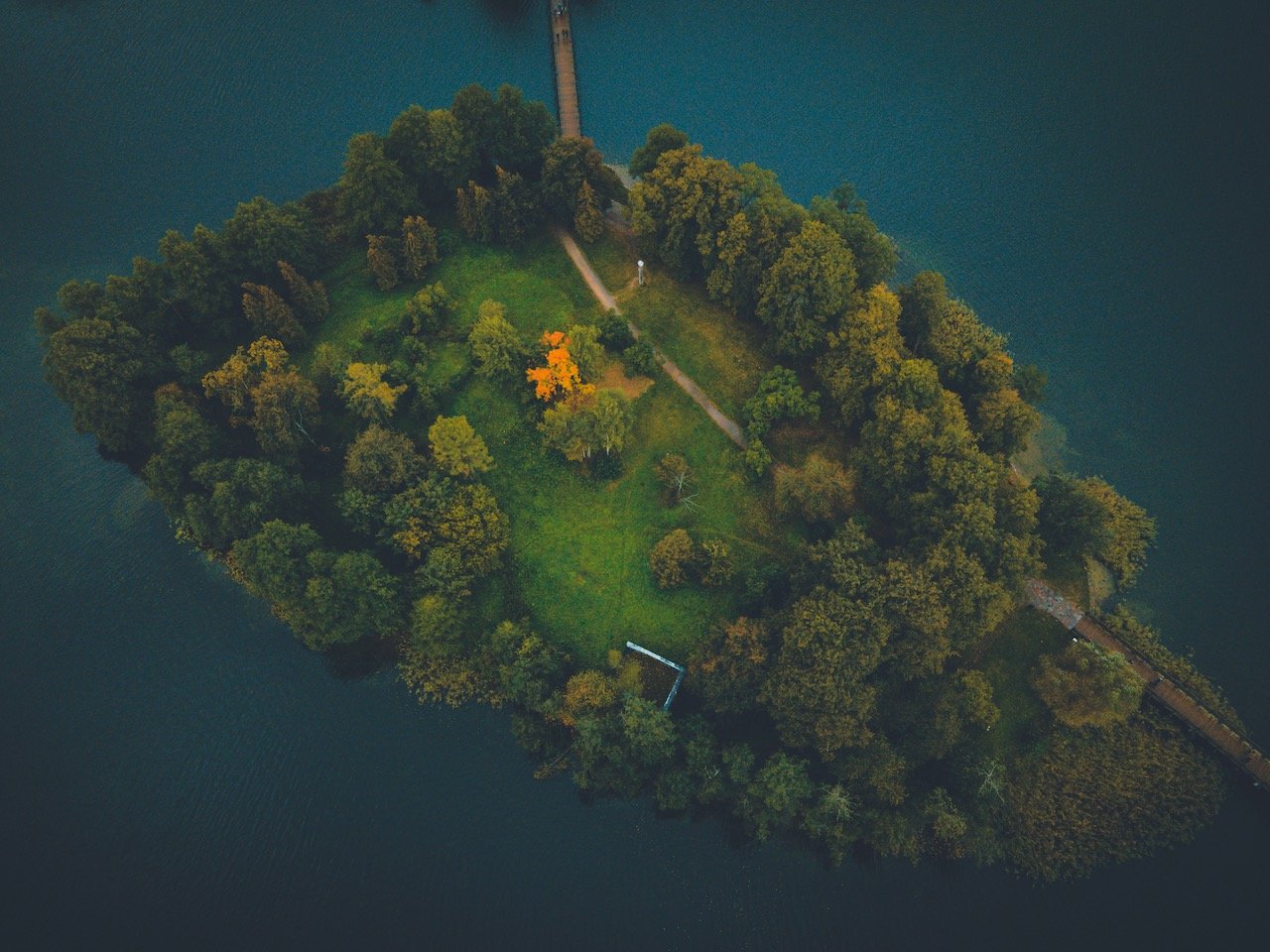

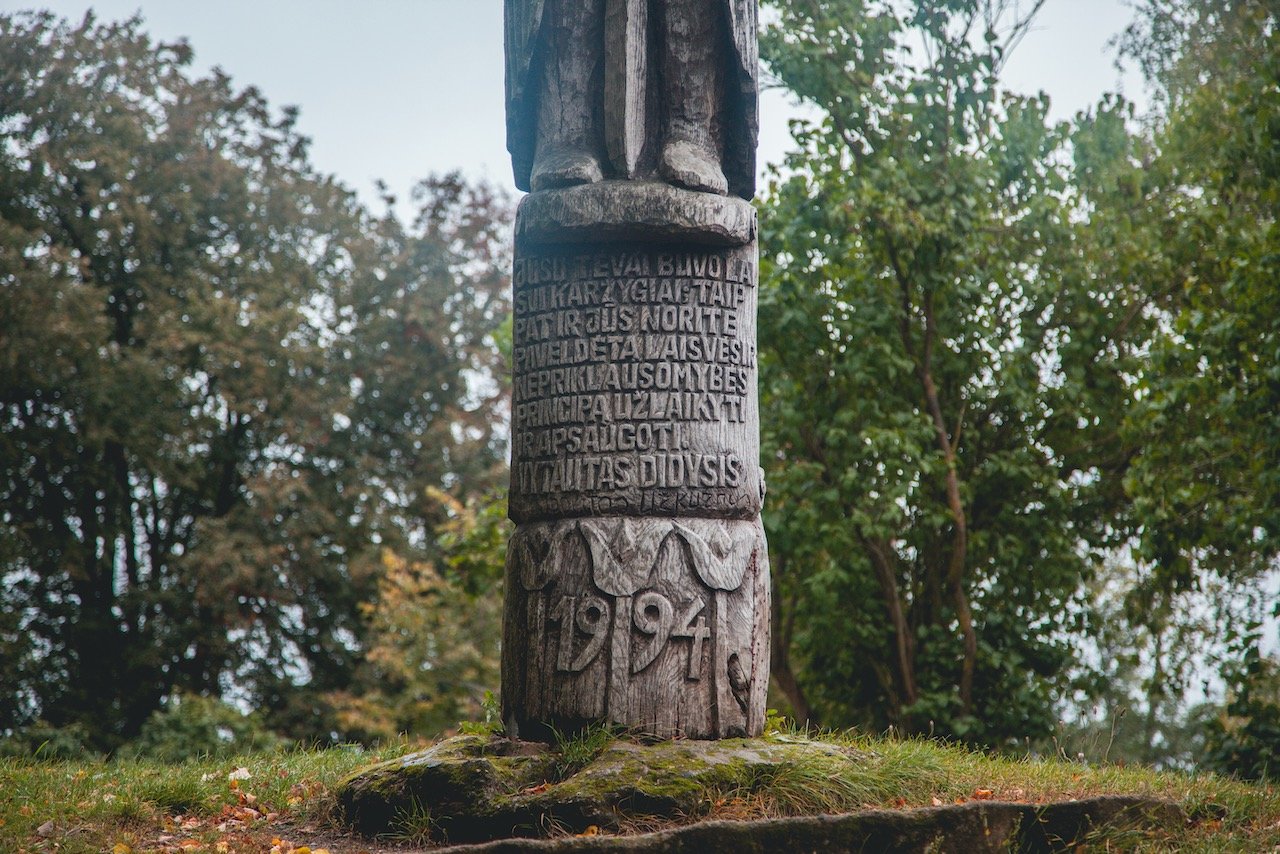
The 2nd stage of construction best exemplified Gothic architecture with small hints of Romanesque features. The castle’s distinctive red color comes from the so called ‘red Gothic bricks’ that were available at that time. Later phases of construction strengthened the castle walls and defenses including more space for armaments and soldiers.
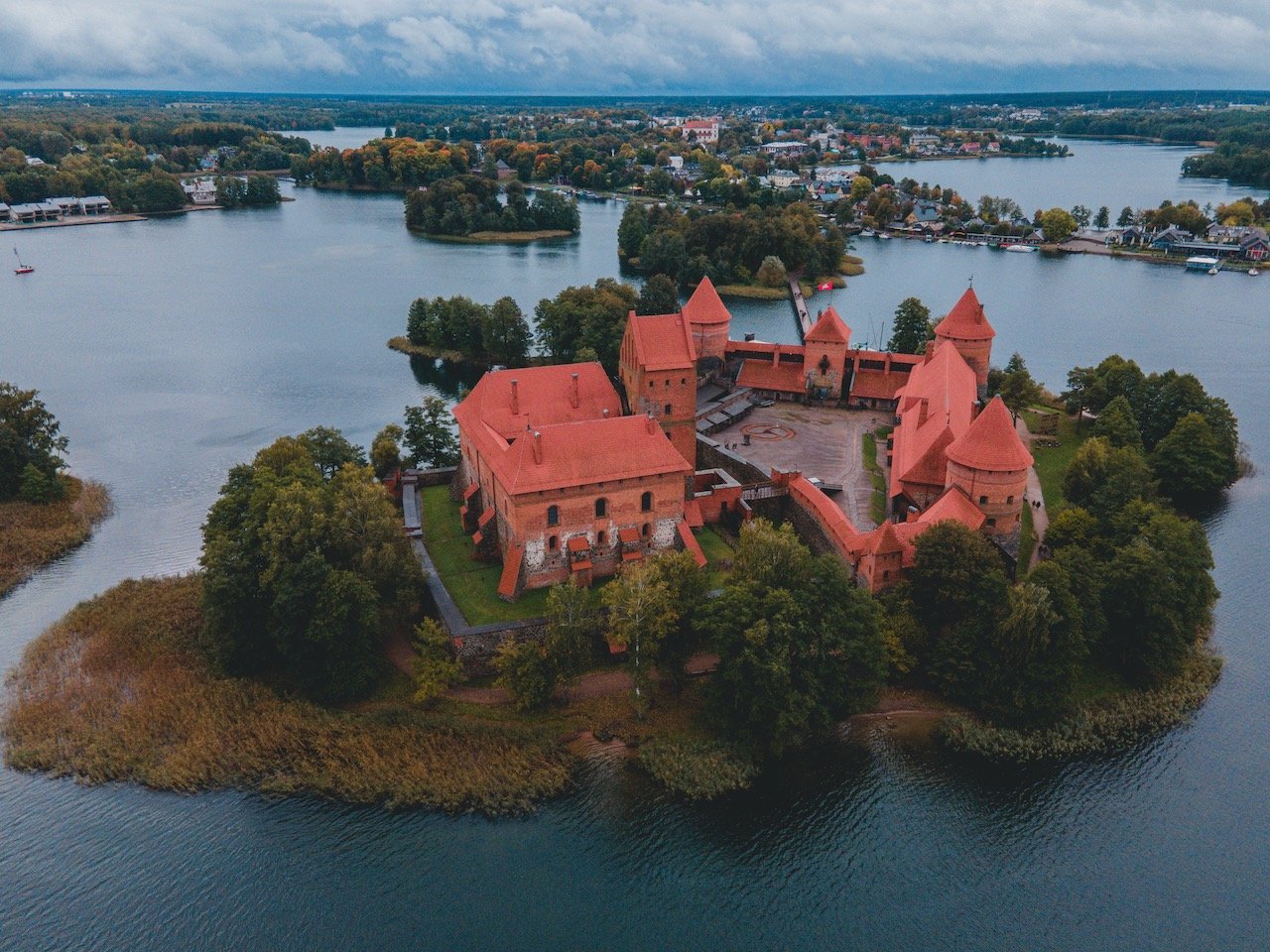
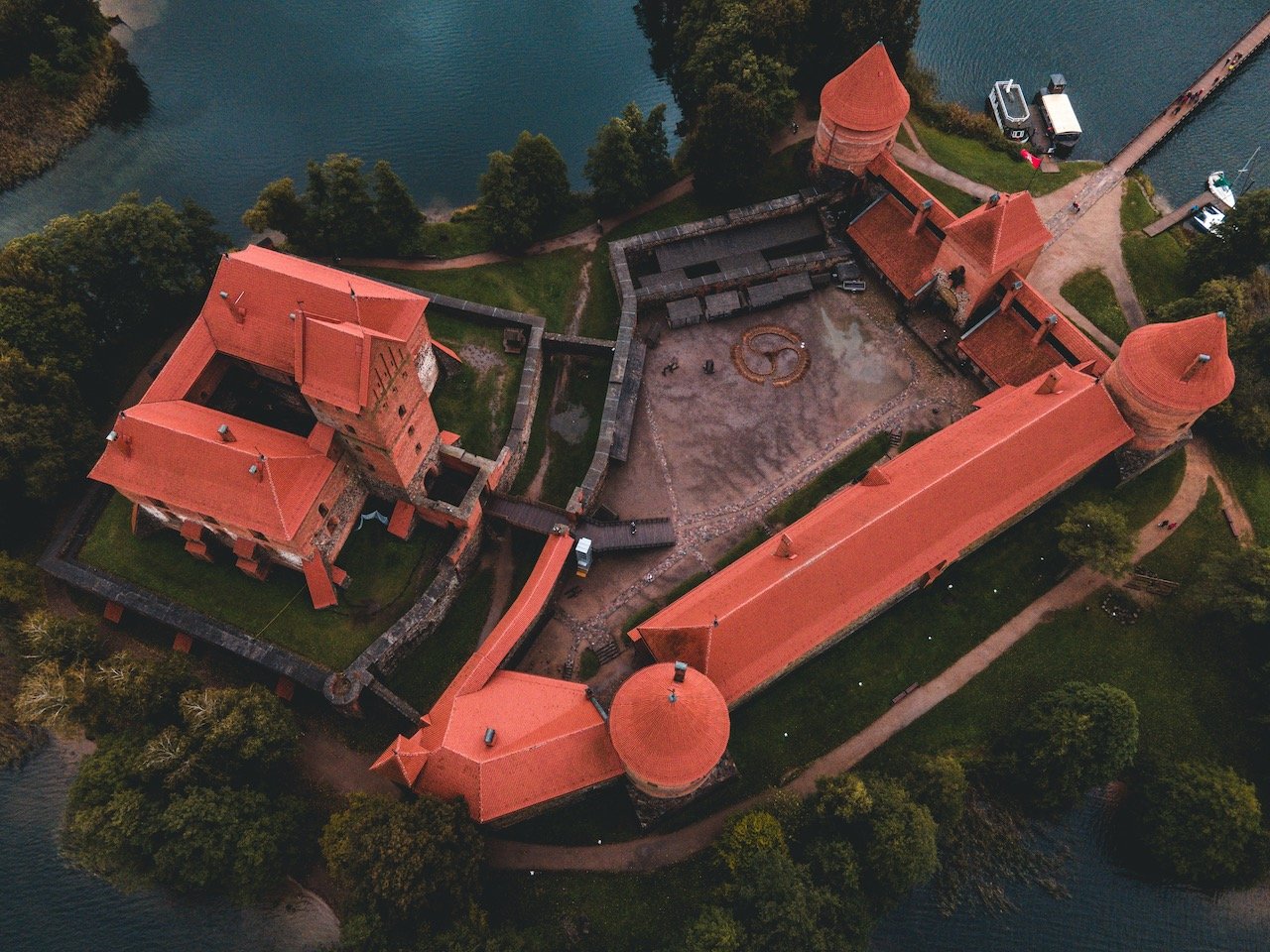
After the Battle of Grunwald, which featured belligerents the Grand Duchy of Lithuania and the Polish-Lithuanian army, the castle fell into disrepair. It wasn’t until the 19th century when reconstruction of the castle was planned first by Russians in 1905, followed by German engineers during World War I. Trakai also became part of Poland from 1920 to 1939. This all culminated in major castle reconstruction finishing in 1961.
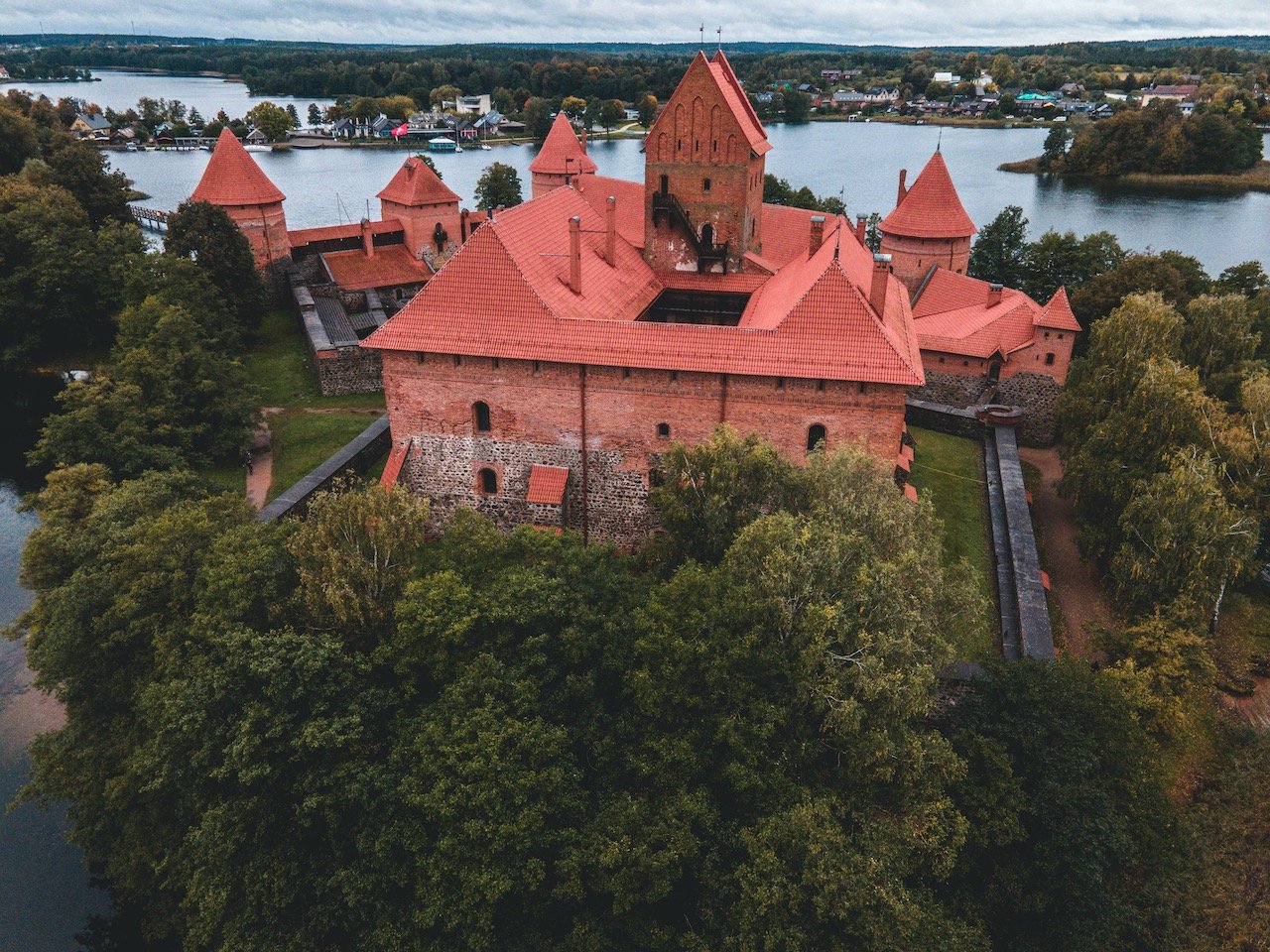
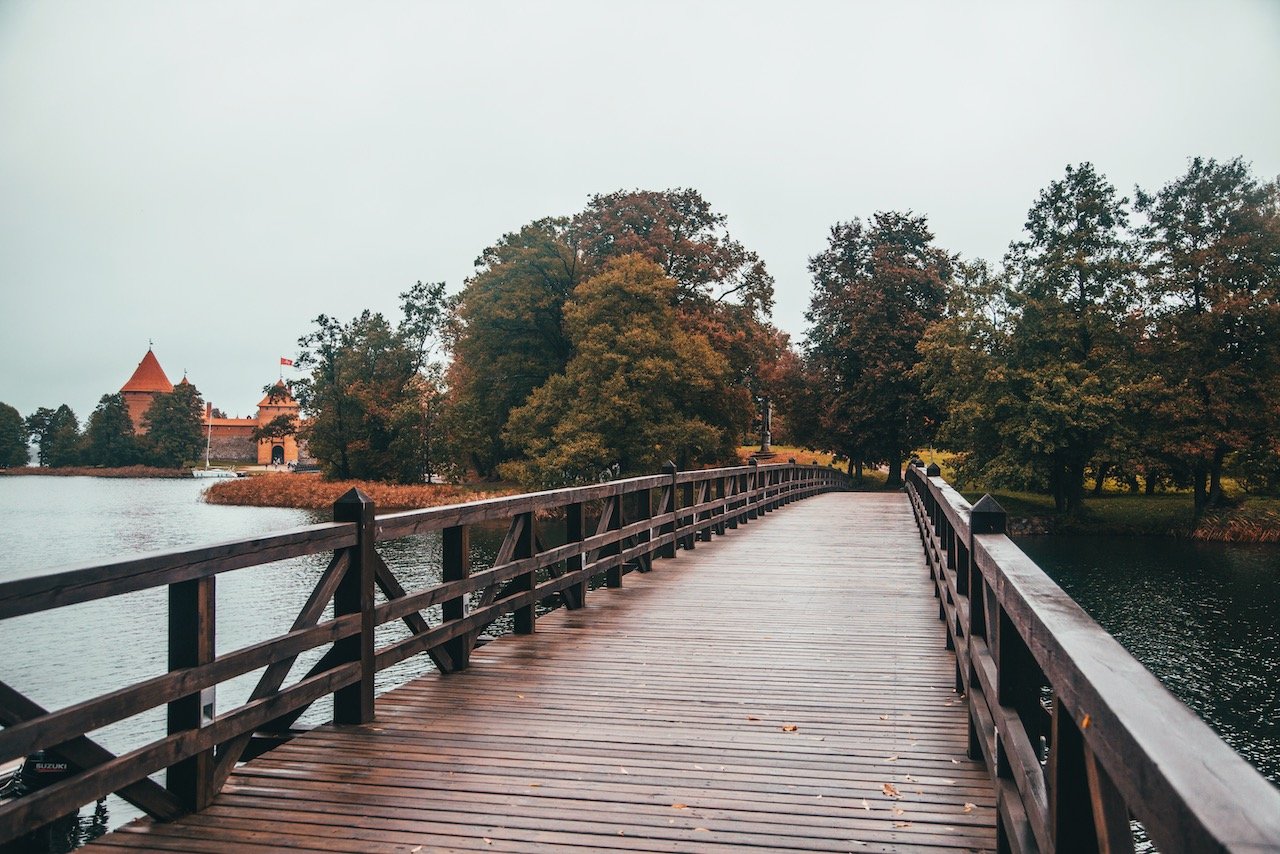
This history of the Castle is MUCH more in-depth than what I have described but that is really the nuts and bolts of it. If you care to know more, or are a history nerd, feel free to google more about the castle. On you visit here, do be sure to check out some of the really notable parts of the castle such as Ducal Palace, the Chapel, the Inner Yard, and the Keep.
